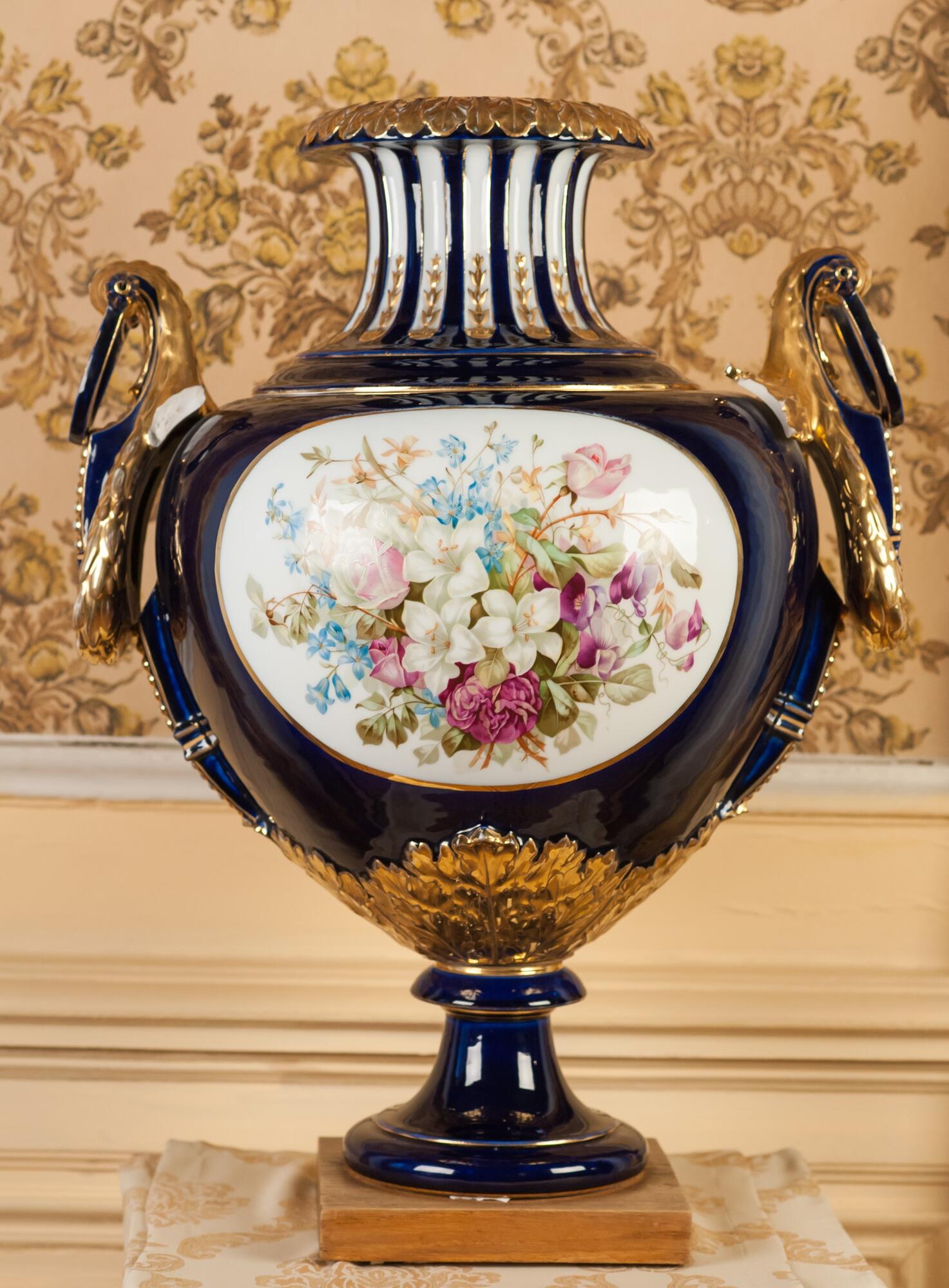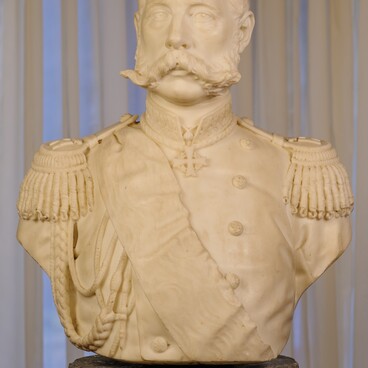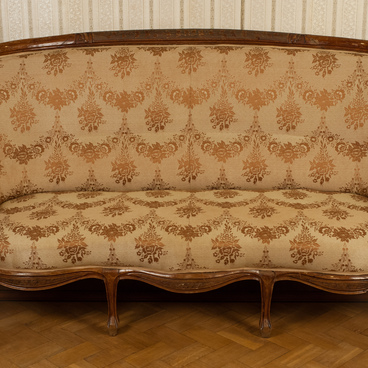This is one of the pair of 19th century Meissen porcelain vases in Massandra palace. It is an iconic onion pattern with a fluted neck. Handles on both sides are shaped like loops and decorated with gilded foliage and wreath relief.
Originally, porcelain was produced in China only, having evolved after centuries of developing of the ceramics craftsmanship. The secret of its production was coveted for ages by Italy, France and England. However, for over 200 years, all the attempts to recreate porcelain had met with failure.
True porcelain was finally produced in the early 1700s. In 1710, the first European porcelain manufacture was founded in the German city of Meissen. It was a German mathematician Ehrenfried Walther von Tschirnhaus (b. 1651 – d. 1708) and an alchemist Johann Friedrich Böttger (b. 1682 – d. 1719) who succeeded in discovering the formula of fine hard-paste porcelain.
By the 1720s, the Meissen Manufacture’s increasingly broad palette already consisted of 16 paints. The polychrome painting was made available thanks to the effort of porcelain painter Johann Gregorius Höroldt. It was Höroldt who helped develop the pigments and improve the production of the porcelain paste itself.
A new method of porcelain decorating was developed, that is, covering it with multicolor glazing. The development of new, heat-resistant on-glaze paints allowed for vibrant hues that would not fade with time. The pigments were mixed by hand according to a formula that was kept top secret. Abundance of gold details, combination of gold-plating and painting all became highly fashionable.
In the mid-19th century, the new director, Ernst August Leuteritz, started redesigning the molds. It was during that period that the manufacture started producing fancy vases, vessels and even lamps. The items were richly decorated with opulent flower patterns.
In the 19th century, porcelain vases, being a perfect reflection of the aesthetic design and tastes of the period, were a must-have accessory in a drawing room, a study or a salon. Meissen porcelains were immensely popular in Russia.
Meissen manufacture has played a key role in European porcelain industry. As it was the first manufacture to produce true porcelain in Europe, it got to define the decoration styles for centuries to come.
Originally, porcelain was produced in China only, having evolved after centuries of developing of the ceramics craftsmanship. The secret of its production was coveted for ages by Italy, France and England. However, for over 200 years, all the attempts to recreate porcelain had met with failure.
True porcelain was finally produced in the early 1700s. In 1710, the first European porcelain manufacture was founded in the German city of Meissen. It was a German mathematician Ehrenfried Walther von Tschirnhaus (b. 1651 – d. 1708) and an alchemist Johann Friedrich Böttger (b. 1682 – d. 1719) who succeeded in discovering the formula of fine hard-paste porcelain.
By the 1720s, the Meissen Manufacture’s increasingly broad palette already consisted of 16 paints. The polychrome painting was made available thanks to the effort of porcelain painter Johann Gregorius Höroldt. It was Höroldt who helped develop the pigments and improve the production of the porcelain paste itself.
A new method of porcelain decorating was developed, that is, covering it with multicolor glazing. The development of new, heat-resistant on-glaze paints allowed for vibrant hues that would not fade with time. The pigments were mixed by hand according to a formula that was kept top secret. Abundance of gold details, combination of gold-plating and painting all became highly fashionable.
In the mid-19th century, the new director, Ernst August Leuteritz, started redesigning the molds. It was during that period that the manufacture started producing fancy vases, vessels and even lamps. The items were richly decorated with opulent flower patterns.
In the 19th century, porcelain vases, being a perfect reflection of the aesthetic design and tastes of the period, were a must-have accessory in a drawing room, a study or a salon. Meissen porcelains were immensely popular in Russia.
Meissen manufacture has played a key role in European porcelain industry. As it was the first manufacture to produce true porcelain in Europe, it got to define the decoration styles for centuries to come.



